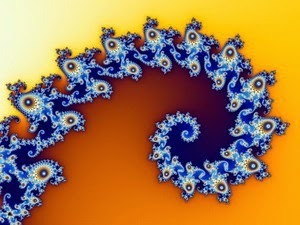Is Innovation the Combination of Divergent Thinking and Convergent Thinking
 Divergent thinking is a thought process or method used to generate creative ideas by exploring many possible solutions. It is often used in conjunction with its cognitive opposite, convergent thinking, which follows a particular set of logical steps to arrive at one solution, which in some cases is a ‘correct’ solution. By contrast, divergent thinking typically occurs in a spontaneous, free-flowing manner, such that many ideas are generated in an emergent cognitive fashion. Many possible solutions are explored in a short amount of time, and unexpected connections are drawn. After the process of divergent thinking has been completed, ideas and information are organized and structured using convergent thinking. (Wikipedia)
Divergent thinking is a thought process or method used to generate creative ideas by exploring many possible solutions. It is often used in conjunction with its cognitive opposite, convergent thinking, which follows a particular set of logical steps to arrive at one solution, which in some cases is a ‘correct’ solution. By contrast, divergent thinking typically occurs in a spontaneous, free-flowing manner, such that many ideas are generated in an emergent cognitive fashion. Many possible solutions are explored in a short amount of time, and unexpected connections are drawn. After the process of divergent thinking has been completed, ideas and information are organized and structured using convergent thinking. (Wikipedia)
"It's not what the vision is, it's what the vision does. “-Senge’s Fifth Discipline. Sometimes Innovation is like a breathing cycle: inhale, exhale, inhale, exhale, diverge, converge, diverge, converge. Truly creative people use the gap between vision and current reality to generate energy for change. So in order to innovate is necessary to follow a process where divergent and convergent thinking is always present and where you can use different tools. Future vision is one of them, a very powerful one.
Innovation is a combination of divergent and convergent thinking. At first the team needs to go divergent to explore the space (during ethnography/contextual inquiry). It’s best to bring a group of people together with cognitive difference such as different backgrounds, capabilities, strengths etc. together in order to obtain such way of divergent thinking. Then during synthesis, while the team is analyzing the "problems," it will better go more more convergent to really hone in on the "why." Once you figure out what the true problems are and ready to ideate that needs to be divergent thinking. So it’s easier to tame a big idea then to make a small one look more fancy that it actually it. Finally, when down-selecting ideas and eventually prototyping that would be more convergent thinking. Innovation. So, in certain degree, the process to transform novel idea to the business value, is a combination of divergent and convergent thinking, the systematic and synthetic processes.
 There is a third and perhaps more effective way to debunk the puzzle of innovation serendipity - generative thinking - that starts with the articulation of a desirable future experience scenario for creative talents, and then allows that to act like a form of attraction or 'pull' as an actualizing potential, spike to both the divergent and convergent ideas and insights that are very likely to follow. The more synergizing co-resonance there is within the designing team, for example, then the more likely that those sudden 'A'Ha!' moments and decisions could flow from this created ”differential” between “what now”and “could-be.”
There is a third and perhaps more effective way to debunk the puzzle of innovation serendipity - generative thinking - that starts with the articulation of a desirable future experience scenario for creative talents, and then allows that to act like a form of attraction or 'pull' as an actualizing potential, spike to both the divergent and convergent ideas and insights that are very likely to follow. The more synergizing co-resonance there is within the designing team, for example, then the more likely that those sudden 'A'Ha!' moments and decisions could flow from this created ”differential” between “what now”and “could-be.”
So divergent thinking is sort of free thinking to keep your mind flow, to explore and question; then convergent thinking will do the reasoning, synthesizing and sum up. Innovation is serendipitous, but manageable; mysterious, but solvable; from divergent to convergent thinking, creativity can emerge from chaos to the order and innovation becomes the light organizations can reach out.
Follow us at: @Pearl_Zhu
Published on February 26, 2015 23:35
No comments have been added yet.



